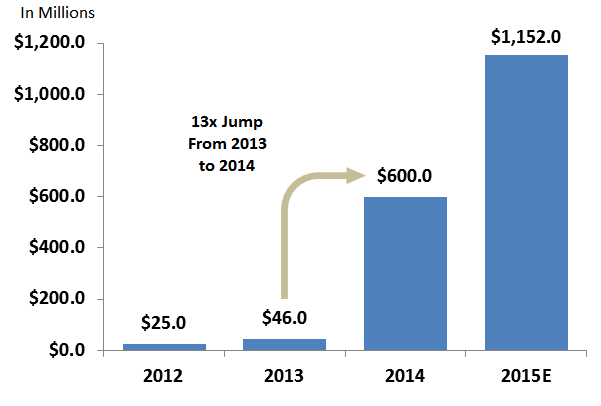In early October, I had the good fortune of seeing Dave McClure, founding partner of 500 Startups, at the Geekwire Summit in Seattle, WA. McClure, with his humor and charisma, had the crowd roaring with laughter as he opined on the venture capital industry.
McClure's philosophy of venture capital is unique: he wants to be big, but not just for the sake of being big, but also for the sake of diversification. He hates the idea of having a few portfolio companies, knowing that only about 10% will be wildly successful. If the rate of success is so low, why not just have more portfolio companies? "I would say spray not pray" says McClure of his investment thesis. The diversification in his portfolio mimics asset allocation techniques of typical Wall Street managers.
Fund of funds, however, are circumspect about investing in 500 Startups for various reasons. Michael Kim of Cendana Capital likes investing in VCs that take big bets because the chance of big returns is higher.
Jason Lemkin of SaaStr notes that while IRRs have been higher than most VCs at 500, given its early stage of investing, cash-on-cash returns may take longer to transpire at 500 than at other VCs.
When I heard McClure talk about valuing diversification so highly, I instantly thought of conglomerate theory in corporate finance. Although there are a lot of differences between a traditional conglomerate and a large VC, there are certainly some similarities. Early stage VCs such as 500 do have operational roles in their portfolio companies, the way a Berkshire Hatahway or GE do. VCs are heavily invested in their portfolio companies, and, especially in the case of 500, the synergies are more financial than operational.
What are some of the reasons investors eschew conglomerates? For one, there is an inherent bias against growing for the sake of growth, and it is believed that conglomerates are in a precarious position for doing just that. "Many conglomerates remain
obsessed with empire building, sacrifice value for
growth, overpay for acquisitions, hang on to
businesses that will never prosper (or would
perform better in other hands) and fail to develop
structures, impose disciplines and create cultures
that sustain value growth." according to Kaye and Yuwono of Marakon Associates. So the question related to 500 Startups would be: Do we think McClure is growing the VC just for the sake of being big? At some point, does adding lots of startups mean that investment criterion have become less stringent?
Another reason money managers prefer non-conglomerates or core businesses is because they view diversification as a job better done by portfolio managers, not management teams. An investor may want to invest in the healthcare sector of GE but not the oil and gas sector. So if she does buy GE stock, she'd to pay a discount for having to invest in an industry that does not interest her. In terms of 500 Startups, do the fund of funds believe that they can do a better job than McClure of diversifying the venture portfolio? What if investors want to support startups in Asia but not Europe and would rather choose geographically focused VC?
To be fair, there is a conglomerate premium for conglomerates outside of the US, as noted in this HBR study, for reasons that may also apply to 500 Startups. For example, a conglomerate in an emerging market may be able to operate each segment of the business better together because it may be able to navigate the regulatory and political environment better than anyone else.
McClure argues that the reason for diversification of 500 Startups is so that the companies can access a wider network of experts, thus providing an operational edge to each of those companies. He says that VCs would like to believe that they are brilliant, but investing in 30 companies is no guarantee that one will hit the $1bil mark. But doesn't buying up a myriad of companies in all different sectors and geographies smell like an index strategy?
Axiomatically, I don't like the idea of playing the numbers game in VC. To me, it sounds like accumulating the most start-ups is akin to investing in the market or chasing beta. By saying VCs aren't "brilliant", he's implying that there's no alpha, so he's employing a benchmark strategy.
But there IS alpha in venture capital! There has to be, right? VC is one of the least efficient markets out there: transaction costs are high, information is asymmetrical, access to investments is limited in many cases, VCs are not rational, and pricing is turbid. All of these inefficiencies, at least theoretically, allow for opportunities to outperform (or underperform) the market consistently (not based on luck, as efficient market hypothesis would suggest). Isn't this why Sequoia and Benchmark outperform, because they are able to generate alpha?
If 500 Startups is outperforming, I think it's because McClure is more "brilliant" at picking and operating good companies than he is giving himself credit for, and not just because of having lots of companies in his portfolio.
If 500 Startups is outperforming, I think it's because McClure is more "brilliant" at picking and operating good companies than he is giving himself credit for, and not just because of having lots of companies in his portfolio.
For more on pluses and minuses of conglomerates, go here.



